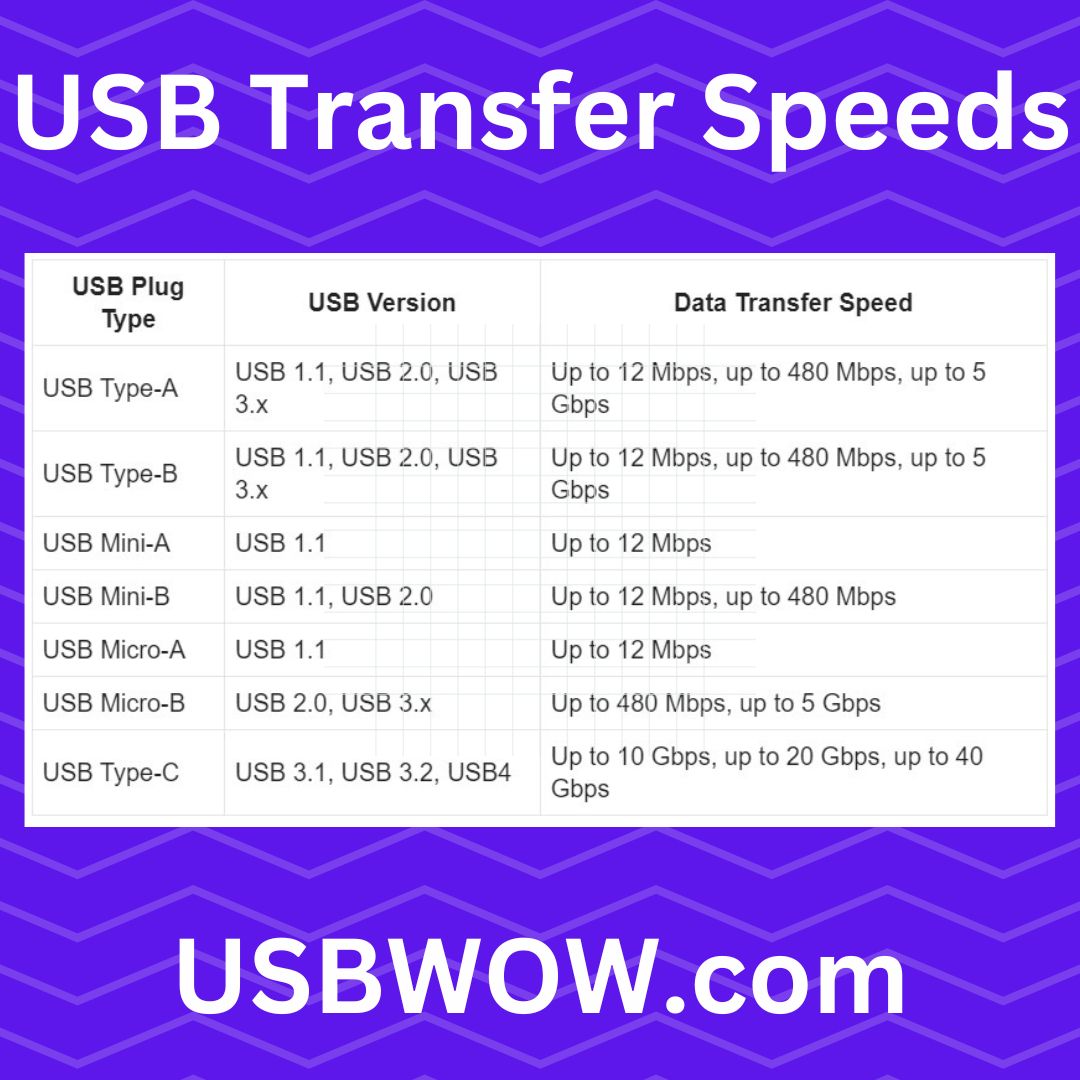USB, or Universal Serial Bus, is a technology that has become the standard for connecting and powering devices.
One of the key characteristics of USB is its data transfer speed, which has increased with each new version.
In this article, we will explore the different speeds of USB, from USB 1.0 to USB 3.2, so you can better understand the differences and which one is right for your needs.
Why do I need to know USB transfer speeds?
In today’s digital age, USB flash drives and other USB devices have become ubiquitous tools for storing and transferring data. From photos and videos to important documents and software installations, USBs are used to move data from one device to another.
However, not all USBs are created equal, and understanding their data transfer speeds is critical to ensure that you are getting the best performance out of your USB devices.
Learn the differences between USB plugs here
For a normal consumer, knowing the data transfer speeds of USBs is important for several reasons.
Firstly, it can help you determine the most efficient way to transfer large files between devices.
For instance, if you need to transfer a large video file from your computer to a USB drive, knowing the data transfer speed of your USB will help you estimate how long it will take to complete the transfer.
This information can be particularly helpful if you are on a tight schedule and need to complete the transfer quickly.
Secondly, understanding USB data transfer speeds can help you identify any performance issues with your USB devices.
If you are experiencing slow data transfer speeds, it could be an indication that there is something wrong with the USB drive or the device it is connected to.
By checking the data transfer speeds of your USB devices, you can quickly diagnose any performance issues and take steps to resolve them.
Find solutions to the most common USB problems
Lastly, knowing USB data transfer speeds can help you make informed decisions when purchasing new USB devices.
Different USB versions and plug types offer different data transfer speeds, and choosing the right one for your needs can ensure that you get the best performance out of your USB device.
By understanding the differences between USB versions and their corresponding data transfer speeds, you can make an informed decision when buying new USBs.
Understanding USB data transfer speeds is important for anyone who uses USB devices for storing and transferring data. By knowing the data transfer speeds of your USB devices, you can estimate transfer times, diagnose performance issues, and make informed purchasing decisions.
Ultimately, having this knowledge can help you get the most out of your USB devices and ensure that your data transfers are fast, efficient, and hassle-free.
USB 1.0 and 1.1
The first version of USB, USB 1.0, was released in 1996. This initial version had a data transfer rate of 1.5 Mbps (megabits per second) and was primarily used for connecting keyboards, mice, and other low-speed peripherals to computers.
In 1998, USB 1.1 was released, which improved upon the data transfer rate of USB 1.0, increasing it to 12 Mbps.
However, these versions of USB are now considered obsolete and most devices no longer support them.
USB 2.0
USB 2.0 was released in 2000, and it brought a significant increase in data transfer rates, up to 480 Mbps.
This made it suitable for high-speed devices such as external hard drives and digital cameras.
USB 2.0 is still widely used and can be found on most computers and devices.
This is the plug you can never get in the right way up the first time!
USB 3.0
In 2008, USB 3.0 was released, which brought even faster data transfer rates of up to 5 Gbps (gigabits per second).
This version of USB was designed to support faster devices such as solid-state drives and 4K displays.
USB 3.0 is backwards compatible with USB 2.0, meaning that it can connect to devices that support USB 2.0.
USB 3.1
In 2013, USB 3.1 was released, which brought a significant increase in data transfer rates, up to 10 Gbps.
This made it suitable for faster devices such as solid-state drives and 4K displays.
USB 3.1 is backwards compatible with USB 3.0, meaning that it can connect to devices that support USB 3.0.
USB 3.2
In 2017, USB 3.2 was released, which improved upon the data transfer rate of USB 3.1, increasing it to 20 Gbps.
This version of USB is designed to support even faster devices such as solid-state drives and 8K displays.
USB 3.2 is backwards compatible with USB 3.1 and USB 3.0, meaning that it can connect to devices that support those versions.
Conclusion
As technology continues to evolve, USB transfer speeds have increased significantly. While USB 1.0 and 1.1 are now considered obsolete, USB 2.0 is still widely used and can be found on most computers and devices.
USB 3.0, 3.1, and 3.2 offer even faster data transfer speeds and are suitable for faster devices such as solid-state drives and high-resolution displays.
| USB Plug Type | USB Version | Data Transfer Speed |
|---|---|---|
| USB Type-A | USB 1.1, USB 2.0, USB 3.x | Up to 12 Mbps, up to 480 Mbps, up to 5 Gbps |
| USB Type-B | USB 1.1, USB 2.0, USB 3.x | Up to 12 Mbps, up to 480 Mbps, up to 5 Gbps |
| USB Mini-A | USB 1.1 | Up to 12 Mbps |
| USB Mini-B | USB 1.1, USB 2.0 | Up to 12 Mbps, up to 480 Mbps |
| USB Micro-A | USB 1.1 | Up to 12 Mbps |
| USB Micro-B | USB 2.0, USB 3.x | Up to 480 Mbps, up to 5 Gbps |
| USB Type-C | USB 3.1, USB 3.2, USB4 | Up to 10 Gbps, up to 20 Gbps, up to 40 Gbps |
Want to know more? Check out our ultimate article – Everything you ever wanted to know about USB

